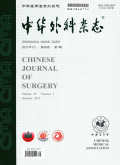Stanford B型主动脉夹层腔内修复术后支架移植物远端新发破口的发生机制与预防措施
Underlying mechanism and preventive measures of distal stent graft-induced new entry after thoracic endovascular aortic repair for Stanford type B aortic dissection
摘要支架移植物远端新发破口是Stanford B型主动脉夹层腔内修复术后发生率较高的并发症.本文从主动脉夹层发生后动脉壁组织学特点,支架移植物弹性变形能力对内膜结构的持续损伤及血流搏动状态下累积损伤三个方面,综述了该并发症的发生机制和预防措施.促进假腔重塑对于支架移植物远端新发破口(dSINE)的预防具有重要价值.
更多相关知识
abstractsDistal stent graft-induced new entry (dSINE) is the complication with high incidence following thoracic endovascular aortic repair (TEVAR) for Stanford type B aortic dissection.This review the underlying mechanism and preventive measures regarding dSINE.General mechanism include:the fragile state of dissected aortic wall and intimal flap is pathophysiologic foundation of dSINE;the continued resistive force to the deformation of stent-graft is mechanical cause of intimal injury;the intimal flap movement within a cardiac cycle result in local damage accumulation in distal site of stent-graft.Aortic remolding play an important role in prophylaxis of dSINE.
More相关知识
- 浏览415
- 被引13
- 下载224


相似文献
- 中文期刊
- 外文期刊
- 学位论文
- 会议论文



 换一批
换一批 换一批
换一批



